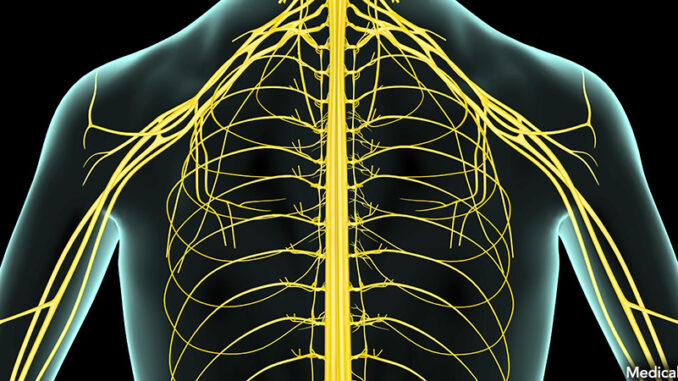
Chile Uses Labels to Combat Obesity
Despite its reputation, the U.S. is not the only country struggling with obesity. The availability of highly-processed, convenient foods worldwide has significantly changed how its people all over the world eat. In Chile, an estimated 67 percent of adults are obese or overweight. This phenomenon affects those across geographic and socio-economic lines. The consumption of sugary drinks in particular, is being blamed for the insurgence of diabetes as well as stomach and gall bladder cancer.
In an effort to fight this problem, Chile passed a law in 2012. Those regulations were recently finalized. Under the law, foods that exceed certain limits of salt, sugar and saturated fat must carry a prominent label on its packaging. Certain foods can no longer be advertised to children under 14, come with a toy, or be sold in or near schools. Businesses have 36 months to comply or face fines. While other countries are adopting their own labeling systems, Chile is being called a pioneer for its over-reaching legislation.
Dig Deeper In the past, Chile was subject to widespread malnutrition. Do research and find any countries in a similar situation to Chile. Find out what measures (if any) are being taken in those countries to combat the problem.
Latest Candidate Controversies
In a world when yesterday’s news cycle can either seem like the distant past or an unending drone, it can be hard to sort it all out. Sometimes a recap can help.
Trump
Given the almost daily instance of news of a Trump faux pas, it can be hard to keep up. In the past few weeks, the running list has grown. In the category of generally offending others, he said he’d “always wanted a to receive” a Purple Heart when gifted one by a supporter; claimed no regrets for his offensive comments about the Khan family who spoke at the Democratic National Convention; and was seemingly rattled by a crying baby at a rally. Regarding party politics, Trump has declined to support both House Speaker Paul Ryan and John McCain in their respective re-election campaigns.
Clinton
While she does not have quite the running tab of missteps as her competitor, the ghosts of Clinton’s past controversies (going back as far as her time as the First Lady of Arkansas) continue to haunt the Democrat. A wave of newly-released emails–these obtained through a lawsuit–reveal questionable activity between the Clinton Foundation (a nonprofit, charitable organization) and the State Department during her time as head diplomat. Critics say that this recent instance shows a pattern of decisions made under her authority that may not have been in the government’s–or the American people’s–best interest.
What Do You Think? Take one issue from each candidate and dig a little deeper. How does the information affect how you feel about either? Write a few sentences to explain your answer.
A Really Old Shark
A recent article published in the journal Science reports that scientists have discovered the oldest-known vertebrate animal (one advanced enough to have a backbone). A Greenland shark recently caught in the Arctic Sea is estimated to between 272 and 512 years old. Its age was determined by something called “radiocarbon dating techniques,” an archaeological tool that measures atomic decay. Before this finding, the record-holder for oldest vertebrate was a 211-year-old bowhead whale. Noting the difficulty of studying the living shark in a lab, scientists hope to extract cells and study those for clues to longevity.
The Greenland shark, the bowhead whale, and the quahog (a type of clam with a beating heart, that can live an estimated 500 years), all have one thing in common: they all live in very cold, northern waters, which is said to account for their extended lifespans. Other species with unusually long lives include the Galapagos giant tortoise (152 years), African elephant (70), long finned eel (60), and the Macaw (80).
Dig Deeper Do some research on the average life expectancy of the most common domestic pets (dogs, cats, fish, turtles, rabbits, hamsters, etc.) Ask around your family and friends and determine the oldest-known pet. Record your findings on a graph.
Machines Helping Paraplegics
Brazilian researchers, working with eight paralyzed patients over the course of a year, have discovered a way to “reawaken” spinal cord fibers. A recent study published in the journal Scientific Reports suggests that through interaction with robot-like machines, people with spine injuries can regain lost movement and feeling. Neuroscientist and physician Dr. Miguel Nicolelis led the research team. The participants were fitted with a robotic apparatus, given virtual reality goggles, and subjected to tactile stimuli on their arms. This created brain signals that were used to control the machine. Those who were able to visualize limb movements also reported regaining some sense of feeling.

Nicolelis heads the Walk Again Project (WAP), a nonprofit, international collaboration with several universities around the world. The ultimate goal of the project is to develop the first real-time brain machine interface (BMI), where patients can use their own brain activity to direct the movements of the wearable, robotic exoskeleton. In 2014, a 29-year old paraplegic named Juliano Pinto wore such a device and performed the ceremonial “opening kick” for the World Cup, held in Brazil.
